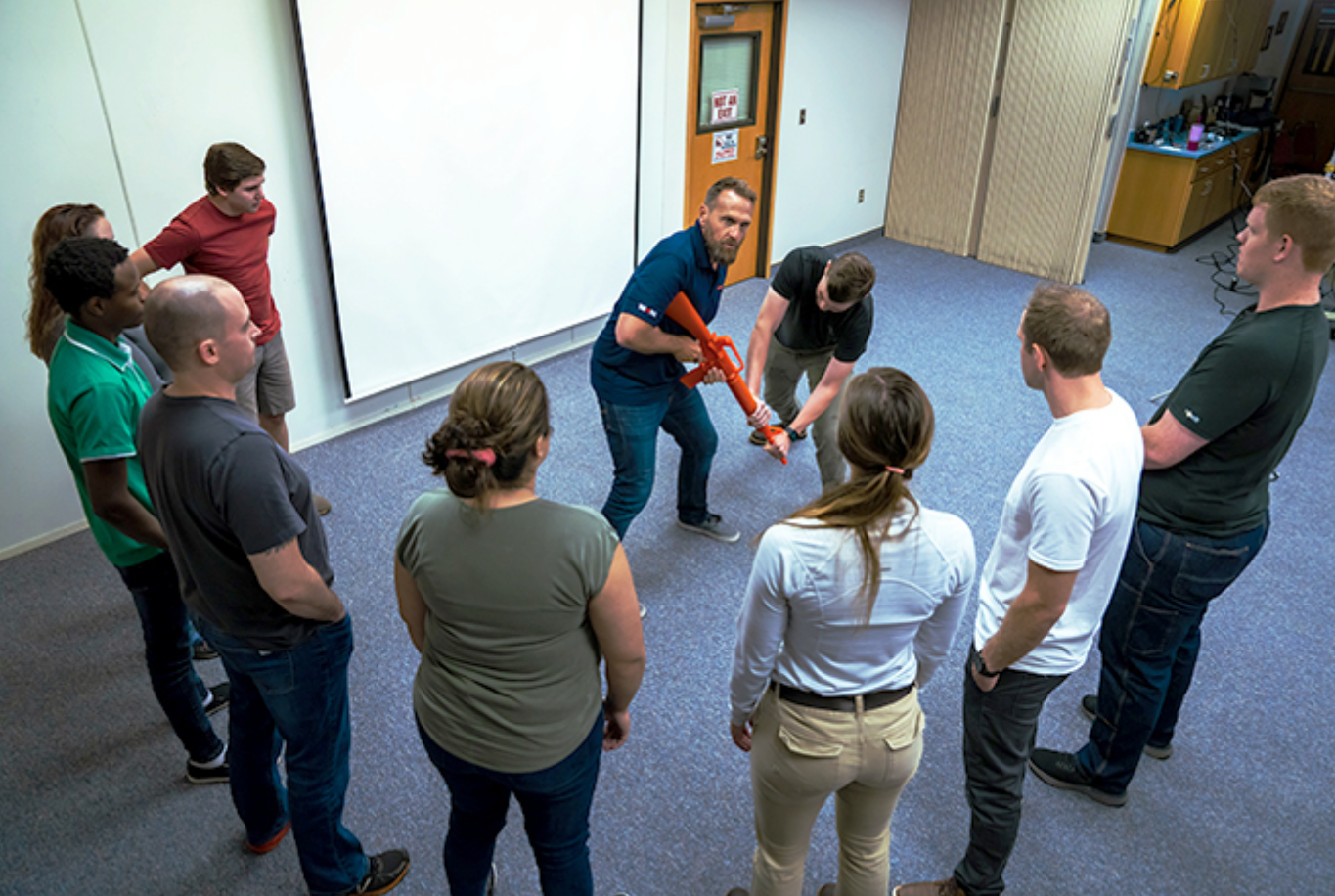The Significance of Active Shooter Training in High-Risk Settings
The Significance of Active Shooter Training in High-Risk Settings
Blog Article
Checking Out the Trick Elements and Objectives of Reliable Active Shooter Training Programs
Active shooter training programs are critical in furnishing people and organizations with the required skills to respond properly to prospective hazards. As we explore the complexities of these training programs, it becomes noticeable that understanding their comprehensive nature is essential to improving security steps and response abilities.
Significance of Energetic Shooter Training
Energetic shooter training programs are vital for boosting preparedness and feedback in the face of possible hazards. These programs intend to furnish people, organizations, and communities with the understanding and skills needed to efficiently react to active shooter circumstances. The increasing regularity and extent of such occurrences underscore the relevance of positive actions, as prompt and educated reactions can dramatically mitigate injury.

Furthermore, these programs can help ease the anxiousness and concern that typically come with conversations about potential hazards. By providing structured guidance and sensible strategies, individuals obtain self-confidence in their capacity to respond appropriately. Inevitably, the relevance of energetic shooter training hinges on its potential to conserve lives, decrease injuries, and grow a prepared and durable community efficient in dealing with unpredicted difficulties.
Trick Elements of Training Programs
Efficient energetic shooter training programs generally include a number of crucial components developed to prepare individuals for real-world circumstances. The very first component is comprehensive education on the nature of active shooter events, consisting of data, instance studies, and emotional aspects that influence assailants. This theoretical foundation is vital for promoting recognition and understanding among individuals.
Following, programs typically include training on individual security steps, stressing the "Run, Hide, Fight" strategy. Participants learn how to examine their setting, make quick decisions, and take ideal actions during a situation. Additionally, the inclusion of reliable interaction abilities is vital, as individuals have to understand just how to report events and share essential details with regulation enforcement.
An additional important element is the participation of police or safety professionals, that give insights into tactical feedbacks and the relevance of participation during a situation. Programs ought to attend to the emotional after-effects of an active shooter situation, using approaches for dealing and recuperation.
Finally, continuous training and refresher training courses are crucial to make sure that knowledge remains present and participants feel great in their capacities. With each other, these crucial components create an all-round training program that equips people to respond efficiently to an active shooter occasion.
Realistic Situation Simulations
Reasonable situation simulations are an important aspect of energetic shooter training programs, giving participants with the possibility to engage in hands-on technique that mirrors possible real-life scenarios. These simulations improve the training experience by producing an immersive setting where people can apply theoretical understanding in sensible settings.
Via using role-playing, simulated have a peek at these guys situations, and specialized training facilities, individuals experience the prompt challenges and stress factors related to an energetic shooter occurrence. This technique of training advertises quick decision-making, synergy, and the application of security protocols under pressure. It enables -responders to create vital skills such as situational awareness, threat analysis, and effective evacuation treatments.
Moreover, realistic simulations help to determine possible weak points in participants' reactions, making it possible for trainers to offer targeted feedback and boost total readiness. The incorporation of differing situations, including different places and attacker profiles, better improves the training experience, making sure that participants are hop over to these guys fully equipped to deal with a variety of prospective situations.
Ultimately, these simulations offer not only to instruct but likewise to develop confidence amongst individuals, fostering a sense of preparedness that is important for effective emergency reaction when faced with an energetic shooter threat. active shooter training.
Interaction Strategies in Training
Clear interaction is vital in energetic shooter training programs, as it straight affects the effectiveness of response efforts throughout a dilemma. Training participants should comprehend the methods and treatments that will certainly assist their actions if confronted with an active shooter circumstance. Developing clear lines of communication ensures that all people included can communicate details without delay and properly.

In addition, training programs ought to highlight the significance of active listening - active shooter training. Participants should be educated to analyze and react to details successfully, lessening misunderstandings that can cause hazardous situations. Normal comments sessions post-training can likewise improve communication methods, making sure that all individuals really feel encouraged to share their experiences and pointers for improvement. Inevitably, effective communication approaches are necessary for preparing people to respond emphatically and cohesively in the face of an active shooter occurrence.
Psychological Readiness Techniques
Emotional readiness techniques are increasingly acknowledged as necessary components of active shooter training programs. These methods aim to equip people with the mental durability essential to respond efficiently in high-stress circumstances. By fostering a mindset in harmony with potential threats, individuals can much better take care of concern, anxiousness, and confusion during important cases.
Key emotional readiness methods consist of scenario-based training and stress inoculation exercises. Scenario-based training submerses individuals in reasonable simulations that mimic the turmoil of an active shooter occasion, enabling them to exercise decision-making under stress. Recommended Reading This exposure helps develop experience with emergency situation protocols, enhancing natural reactions.
Stress inoculation includes steady exposure to stress-inducing scenarios, enabling people to create coping systems. This can include breathing exercises, visualization strategies, and cognitive restructuring to reframe unfavorable thoughts. By incorporating these methods, training programs can grow a feeling of confidence and control, which is essential in situation scenarios.
In addition, post-incident mental assistance is critical to resolve the emotional consequences of an energetic shooter occasion. Incorporating mental health sources right into training programs not just prepares people for instant feedbacks however additionally advertises long-lasting mental wellness, ultimately adding to a more secure and more durable setting.
Conclusion

Report this page